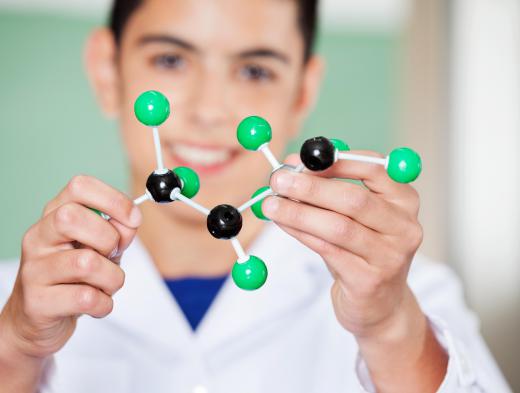What is Diffusion?
In general terms, diffusion simply means the spreading of a substance or quality from an area of relatively high concentration to an area of lower concentration. The term is most commonly used to describe the process by which molecules of different types achieve a uniform concentration, after initially being unevenly distributed, through their random movements. This is sometimes called molecular diffusion and it plays a key role in many areas of physics, chemistry, and biology. It is closely related to the way in which cells take up nutrients, thus life could not exist without it. The term can also refer to the spreading of heat or light, or, in the context of social science, the spreading of ideas or innovations through society.
Molecular Diffusion

Molecules are constantly in motion, due to the presence of heat; even at extremely low temperatures, some heat energy is present, giving particles thermal motion. In solids, the particles are held in a relatively rigid structure and cannot stray too far from their starting positions, but in liquids and gases, they are free to move in a less restricted way. This motion is random, since the molecules are constantly bouncing off one another, so that there is no overall pattern. This random motion is what allows diffusion to occur. The rate at which the phenomenon occurs rises with temperature, as the speed with which the particles move increases.

If two different gases at the same temperature are brought into contact with one another then, over time, the random motion of their molecules will cause them to mix until they are evenly distributed, without the influence of any external factor. A similar phenomenon can often be observed with two different liquids, but sometimes, due to chemical factors, the liquids will not mix. For example, adding vegetable oil to water will not result in diffusion. When a solid is dissolved in a liquid, its molecules will diffuse throughout the liquid.
In liquids that mix, diffusion may be observable if the liquids are of different colors. This phenomenon should not, however, be confused with convection or advection, which involve the bulk movement of fluids by currents that require an energy source. Diffusion is one form of what scientists call passive transport, meaning movement that occurs without any additional energy being required. In the often-quoted example of a drop of colored dye being added to a glass of water, much of the mixing that occurs is actually due to the currents set up by the initial movement of the drop of dye under gravity. In experiments that eliminate this, and similar, effects, true diffusion can be observed; for example, colored water can be seen to diffuse through a gel, but this is a much slower process.
Importance for Life
Diffusion also plays a role in the processes involved in the life of a cell, particularly the transportation of nutrients, amino acids and other essential substances from one place to another. Osmosis, the process by which molecules are transported across the walls and membranes of individual plant and animal cells, is a form of diffusion. A cell wall is a selectively permeable membrane, or one through which certain molecules can pass, but others cannot. If, on one side of a membrane, there is a solution of a high concentration, while on the other side is the same solution in a lower concentration, the solvent will tend to move to the area of higher concentration until the two solutions reach equilibrium. This can only occur if the molecules of the solute — the dissolved substance — are larger than those of the solvent. The smaller solvent molecules can pass through the membrane, while the larger ones are too large to do so, and must remain on the other side.
Other Forms of Diffusion
Diffusion can also mean the spread of heat through a solid, although this is usually referred to as conduction, and the spreading of light through a translucent substance — for example frosted glass in a light bulb used to provide a “diffuse” light that is more pleasant on the eye. Outside the context of physics, the term can be used to describe the spread of an idea or an innovative technology through a population through contact between people, conformity within a group, or through observation of the benefits brought to others.
AS FEATURED ON:
AS FEATURED ON:












Discussion Comments
Wow! I bet there is a great world in cells that i didn't even notice! This website has everything I needed to do my "I wonder" question! Thanks for all of the help and I will definitely visit this website again to explore! science rules!
This is very interesting. I have never heard about diffusion. I watched a cool video about osmosis. the character's name was osmosis jones. This movie teaches almost as much as this website did! Thanks to this website, I got a good grade on this question!
There are many other examples of diffusion and osmosis in everyday life. One other example of how diffusion works is when you spray air freshner in a room - at first the smell is only in one area, however before long the smell of the air freshner has spread to other parts of the house. An everyday example of osmosis is seen in a coffee maker - water diffuses through a semipermeable membrane (the coffee filter) and takes flavor from the coffee with it.
When I first learned what diffusion was in about 6th or 7th grade, we were taught the example of when bread is burned in a toaster. At first, the smell is only in the room where the toaster is. Within a couple of hours, the smell of the burnt toast has spread across the entire house; this is because the particles have diffused across that distance. It was a simple example, but I’ve understood it ever since.
Post your comments